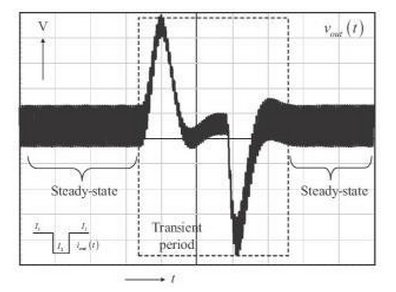With the same input and output voltage, the same power, the same package, and power modules from different manufacturers, which performance is better? For a high-performance power supply module, there are many items that need to be tested, and these performances are closely related. This article selects several aspects of the performance to compare and elaborate.
1. Stable and reliable
Stability and reliability are fundamental. If the power supply module runs stably and reliably during operation, it cannot be guaranteed, so other performances are not mentioned.

From a design point of view, it is necessary to consider that when the module is in the worst environment, the electrical stress and thermal stress of each device in the module are within the allowable range and a certain margin is ensured, and the system should remain stable when the system is subject to certain interference.
From the application point of view, although some performance cannot be tested, the stability and reliability of the power supply can be tested according to the extreme test conditions of the specification, such as the highest and lowest voltage, the highest and the lowest temperature, the maximum load, etc.; the circuit can also be recommended according to the specification as shown in Figure 1. , Test the module's surge immunity, electrostatic immunity, pulse group immunity, etc.; it can also test the module's continuous short circuit, repeated power on and off, etc.

Figure 1 Recommended circuit
Of course, these tests themselves are destructive and will cause certain damage to the module, and should not be used on the product after the test.
2. Capacitive load and overcurrent protection
The larger the capacitive load capacity of the power supply, it often means that the current limit point is set higher. It usually leads to higher electrical stress during startup and output short circuit, and even saturates the transformer. On the other hand, in the range of the power supply from the rated load to the current limit point load, the power supply cannot achieve overcurrent protection, which will seriously affect the reliability and life of the power supply.
3. Load adjustment rate and minimum load requirements
For a single output power supply, there is generally no minimum load requirement. But when the load drops below 10% of the rated load, in order to reduce the no-load or light-load power consumption of the power supply, it will enter the intermittent working mode. Although it does not affect its normal operation, its ripple may increase and audible noise may appear. Therefore, power also needs to be considered when choosing a power supply module. If the maximum load is less than 1W, it is obviously inappropriate to choose a power supply of 10W or more.
In addition, for dual and more output power supplies, it is usually required that each output has at least 10% rated load. Take dual output as an example. If the main circuit is fully loaded and the auxiliary circuit has a rated load below 10%, the output voltage of the auxiliary circuit will be much higher than the rated value; if the main circuit has a rated load below 10%, and the auxiliary circuit is fully loaded , Will cause the output voltage of the auxiliary circuit to be much lower than the rated output value.
In addition, it is worth noting that if the main circuit suddenly changes from a heavy load to a very light load or vice versa, it will cause an undershoot or overshoot in the auxiliary circuit voltage. Obviously this means that the "big move" of the main road may cause the auxiliary road to work abnormally.
The module itself can add a larger dummy load, which of course will increase its loss. When choosing a power supply module to design a system, especially for multiple output modules, the lightest load should be considered.

Figure 2 Overshoot and undershoot
4. Other basic performance
Other performances that need to be compared include: ripple noise, voltage accuracy, voltage regulation, power-on overshoot, rise time, power-down hold-up time, no-load power consumption, efficiency, etc. However, when testing, a standardized test method should be used. For example, when testing ripple noise, the bandwidth should be limited to 20M, and the test method or parallel line test method should be adopted.
5. Summary
To sum up, it is unwise to conclude that a certain power supply performance is better by comparing only one or two aspects of performance. The designer may usually sacrifice another performance for the sake of another.
For the user, the module should be selected according to the actual situation. Usually, it is sufficient to satisfy the application under the premise of stability and reliability, and it is not necessary to pursue the optimal performance of all. The design of the module is usually to meet the general requirements. If in some cases, the specific application cannot be met, the module designer should be contacted to provide corresponding solutions.
For designers, they should pay attention to the mutual influence of each performance to optimize the overall performance.
Outdoor Solar Lights,Solar Powered Garden Lights,Solar Powered Outdoor Lights,Solar Yard Lights
Wuxi Shengda Yukun Energy Development co.,Ltd , https://www.xlite-solarlight.com